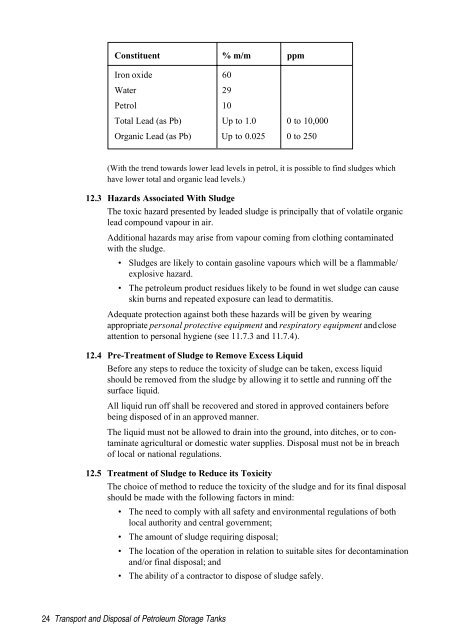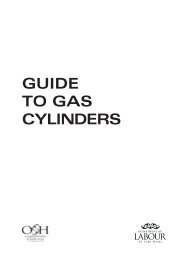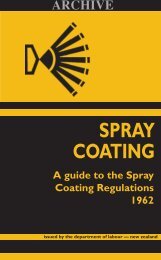Underground Petroleum Storage Tanks and Related Wastes - Code ...
Underground Petroleum Storage Tanks and Related Wastes - Code ...
Underground Petroleum Storage Tanks and Related Wastes - Code ...
Create successful ePaper yourself
Turn your PDF publications into a flip-book with our unique Google optimized e-Paper software.
Constituent % m/m ppm<br />
Iron oxide 60<br />
Water 29<br />
Petrol 10<br />
Total Lead (as Pb) Up to 1.0 0 to 10,000<br />
Organic Lead (as Pb) Up to 0.025 0 to 250<br />
(With the trend towards lower lead levels in petrol, it is possible to find sludges which<br />
have lower total <strong>and</strong> organic lead levels.)<br />
12.3 Hazards Associated With Sludge<br />
The toxic hazard presented by leaded sludge is principally that of volatile organic<br />
lead compound vapour in air.<br />
Additional hazards may arise from vapour coming from clothing contaminated<br />
with the sludge.<br />
• Sludges are likely to contain gasoline vapours which will be a flammable/<br />
explosive hazard.<br />
• The petroleum product residues likely to be found in wet sludge can cause<br />
skin burns <strong>and</strong> repeated exposure can lead to dermatitis.<br />
Adequate protection against both these hazards will be given by wearing<br />
appropriate personal protective equipment <strong>and</strong> respiratory equipment <strong>and</strong> close<br />
attention to personal hygiene (see 11.7.3 <strong>and</strong> 11.7.4).<br />
12.4 Pre-Treatment of Sludge to Remove Excess Liquid<br />
Before any steps to reduce the toxicity of sludge can be taken, excess liquid<br />
should be removed from the sludge by allowing it to settle <strong>and</strong> running off the<br />
surface liquid.<br />
All liquid run off shall be recovered <strong>and</strong> stored in approved containers before<br />
being disposed of in an approved manner.<br />
The liquid must not be allowed to drain into the ground, into ditches, or to contaminate<br />
agricultural or domestic water supplies. Disposal must not be in breach<br />
of local or national regulations.<br />
12.5 Treatment of Sludge to Reduce its Toxicity<br />
The choice of method to reduce the toxicity of the sludge <strong>and</strong> for its final disposal<br />
should be made with the following factors in mind:<br />
• The need to comply with all safety <strong>and</strong> environmental regulations of both<br />
local authority <strong>and</strong> central government;<br />
• The amount of sludge requiring disposal;<br />
• The location of the operation in relation to suitable sites for decontamination<br />
<strong>and</strong>/or final disposal; <strong>and</strong><br />
• The ability of a contractor to dispose of sludge safely.<br />
24 Transport <strong>and</strong> Disposal of <strong>Petroleum</strong> <strong>Storage</strong> <strong>Tanks</strong>





